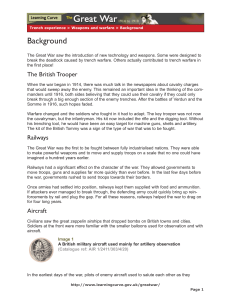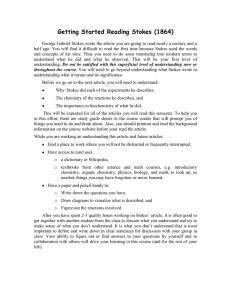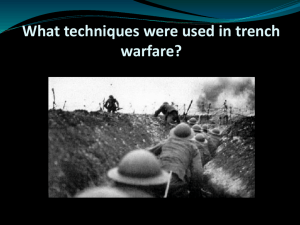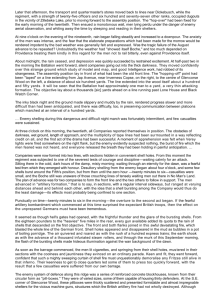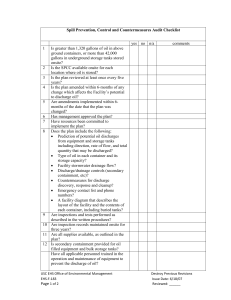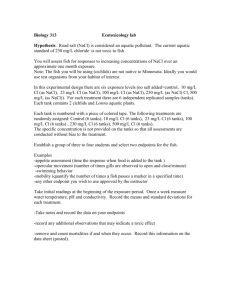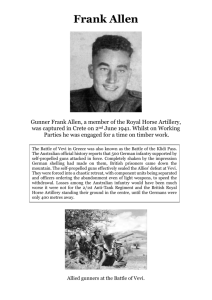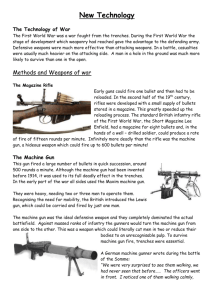1-114 - George C. Marshall Foundation
advertisement
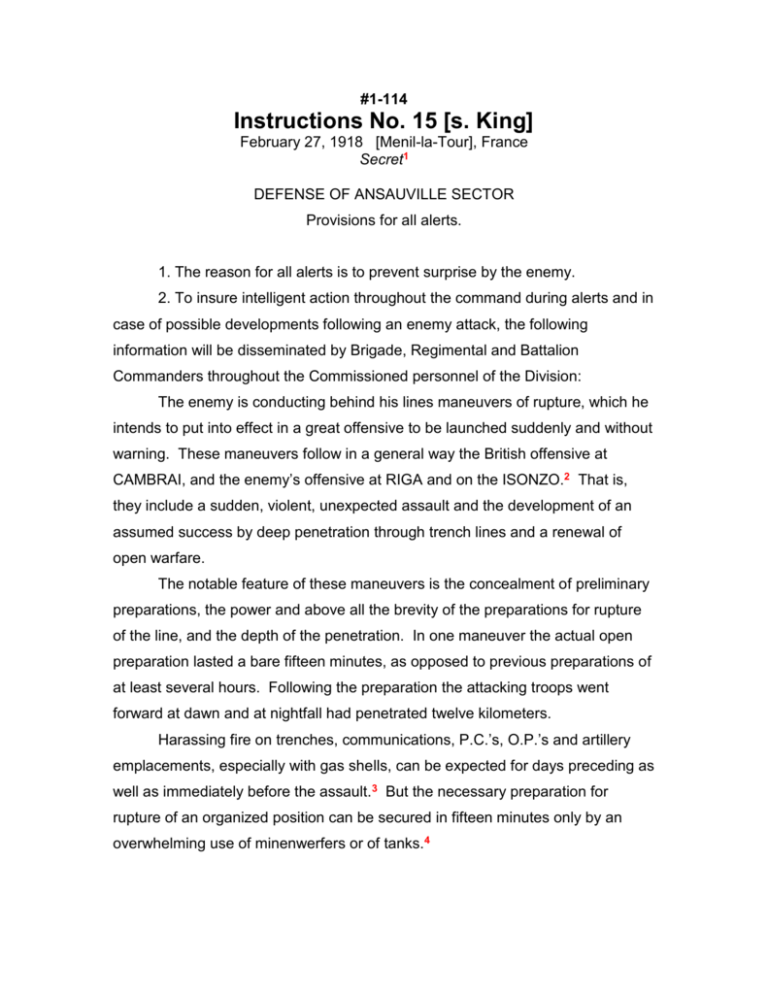
#1-114 Instructions No. 15 [s. King] February 27, 1918 [Menil-la-Tour], France Secret1 DEFENSE OF ANSAUVILLE SECTOR Provisions for all alerts. 1. The reason for all alerts is to prevent surprise by the enemy. 2. To insure intelligent action throughout the command during alerts and in case of possible developments following an enemy attack, the following information will be disseminated by Brigade, Regimental and Battalion Commanders throughout the Commissioned personnel of the Division: The enemy is conducting behind his lines maneuvers of rupture, which he intends to put into effect in a great offensive to be launched suddenly and without warning. These maneuvers follow in a general way the British offensive at CAMBRAI, and the enemy’s offensive at RIGA and on the ISONZO.2 That is, they include a sudden, violent, unexpected assault and the development of an assumed success by deep penetration through trench lines and a renewal of open warfare. The notable feature of these maneuvers is the concealment of preliminary preparations, the power and above all the brevity of the preparations for rupture of the line, and the depth of the penetration. In one maneuver the actual open preparation lasted a bare fifteen minutes, as opposed to previous preparations of at least several hours. Following the preparation the attacking troops went forward at dawn and at nightfall had penetrated twelve kilometers. Harassing fire on trenches, communications, P.C.’s, O.P.’s and artillery emplacements, especially with gas shells, can be expected for days preceding as well as immediately before the assault.3 But the necessary preparation for rupture of an organized position can be secured in fifteen minutes only by an overwhelming use of minenwerfers or of tanks.4 3. Defense in the case of the enormous use of minenwerfers must consist in a proper distribution of troops in depth. Defense of Position 1 must consist of determined resistance of such elements as have not been put out of action by the bombardment. Defense in case of an extensive use of tanks must consist in the determined defense of strong points containing anti-tank guns, the use of all available artillery as mobile anti-tank guns, and the destruction of tanks by explosive charges or Stokes bombs, dropped on them or placed in their path.5 In this connection it must be noted that tanks might conceivably penetrate as far as ANSAUVILLE–RAULECOURT. In such a contingency all troops are charged with holding their advance by any means at hand. Document Copy Text Source: Records of the American Expeditionary Forces (World War I) (RG 120), Records of the First Division, Historical File, National Archives and Records Administration, College Park, Maryland. Document Format: Typed memorandum. 1. Most documents intended for internal use by the A.E.F. were restricted by some level of security classification. That classification is printed here only if it was indicated on the copy used by this project. An additional method of maintaining secrecy was by issuing a document only to a limited distribution list. These lists are not printed here. 2. At Cambrai, France, the British attacked the Germans without artillery preparation, but with 381 tanks, on November 20, 1917; the initial success turned to near disaster nine days later. On September 1, 1917, the German Eighth Army attacked the Russian Twelfth Army, capturing the city of Riga, Latvia, in three days. The Twelfth Battle of the Isonzo (Caporetto) began on October 24, 1917, when twelve German and Austrian assault divisions suddenly attacked the Italian Army across the Isonzo River, forcing a disastrous Italian retreat. 3. P.C. = Post of Command. O.P. = Observation Post. 4. A Minenwerfer (“mine-thrower”) was a German muzzle-loading trench gun used to destroy machine-gun nests. 5. The Stokes trench mortar, named after its inventor, Sir Wilfrid S. Stokes, was a Britishmade, light, three-inch, muzzle-loading mortar that fired a projectile (Stokes bomb) weighing eleven pounds. Recommended Citation: The Papers of George Catlett Marshall, ed. Larry I. Bland and Sharon Ritenour Stevens (Lexington, Va.: The George C. Marshall Foundation, 1981– ). Electronic version based on The Papers of George Catlett Marshall, vol. 1, “The Soldierly Spirit,” December 1880-June 1939 (Baltimore and London: The Johns Hopkins University Press, 1981), pp. 130– 131.
